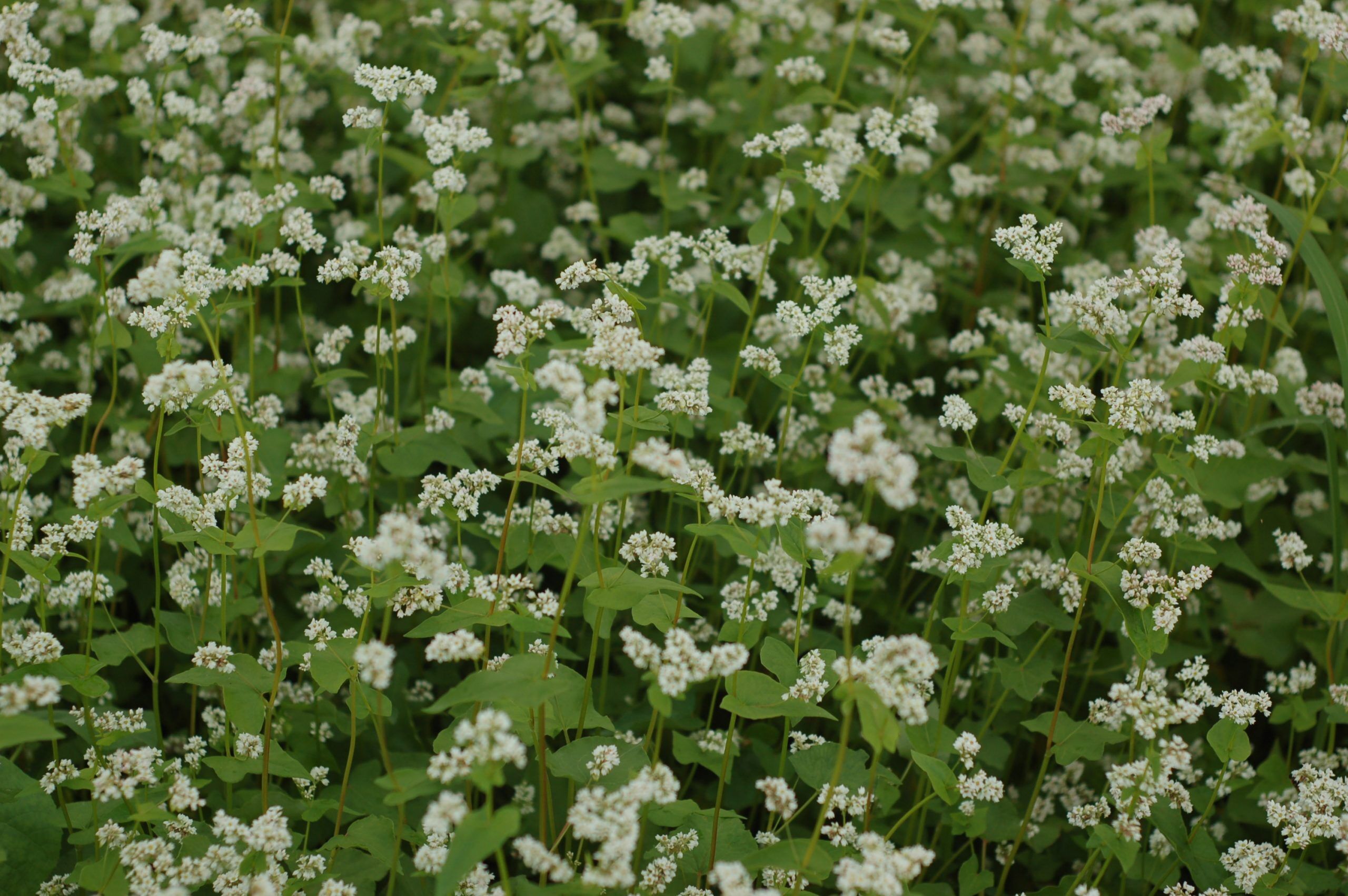Buckwheat is a rapidly growing broadleaf cover crop to fight summer annual weed pressure and build soil in short windows between warm season crops, or in the transition periods between winter annuals and summer annuals. It also is a good transition crop to help bring idle land back into production. It increases phosphorus bio availability making it more available to the following crop.
When planted after tillage, buckwheat can help weaken perennial weeds as well. Blossoms attract beneficial insects such as bees and other beneficial predatory insects such as hoverflies, predatory wasps, insidious flower bugs that attack or parasitize aphids, mites and other pests. Scoliidae (Scoliid wasps) that are attracted to buckwheat flowers will parasitize grubs. Flowering will start in about four to five weeks, and typically continues to flower for up to 10 weeks. Planted in mid to late summer it can flower within three weeks of planting. Planted in September as a companion crop along with over wintering legumes, the buckwheat will flower in late September into early October, before the first frost, providing nectar and pollen for late foraging honey bees.
Caution the seed matures in about 2 to 3 weeks after flowering and can self seed. Buckwheat can fit into any rotation any time in late spring through late summer, as temperatures allow.
Buckwheat has a low water requirement and typically doesn’t do well in wet soils. It can tolerate poor fertility as well as a wide range of soil pH. But it is not shade tolerant. Buckwheat can improve soil quality, increasing short term soil tilth, and can be used to prepare fields for transplants.
Biomass is very succulent, breaks down quickly, and is easy to no-till into. Not competitive with subsequent crops.
Caution: Don’t plant buckwheat after using these herbicides on the preceding crop: Atrazine, Pursuit (imazethapyr), Sandea and Permit (halosulfuron) and Reflex (fomesafen)
Buckwheat as a Cover Crop (Cornell Extension)
NOW AVAILABLE IN 5 POUND BUCKETS
